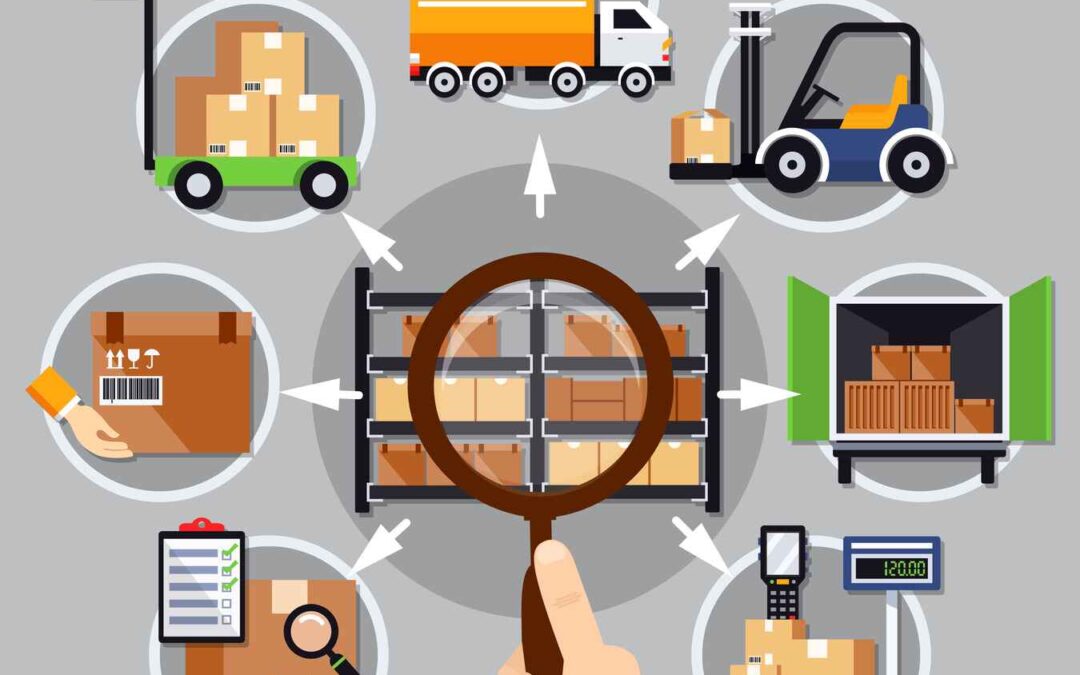Managing suppliers is very important for the success and growth of any organization. A well-planned supplier management strategy not only makes operations run more smoothly, but it also builds solid partnerships that create long-term value. It is an important aspect of the supply chain that may help businesses expand by lowering costs, improving quality, lowering risks, and more. In this post, we talk about the necessity of managing suppliers, how to make a good supplier management plan, and the best ways to improve your relationships with suppliers.
What is the job of a supplier manager?
Supplier management is the process of strategically managing the relationships with suppliers to make the whole supply chain work better. There are a number of steps involved, such as choosing the best suppliers, negotiating contracts, keeping an eye on how well they do their jobs, and always working to make the partnership better. The main goal of supplier management is to make sure that suppliers meet business needs by delivering high-quality goods or services on schedule and at rates that are competitive.
Good supplier management is important because it gives businesses an edge over their competitors, makes operations run more smoothly, and builds long-lasting, mutually beneficial partnerships. It is a continuing process that needs constant attention, open communication, and the use of technology to be successful.
1. Cost Efficiency: Why Supplier Management Is Important
One of the main benefits of managing suppliers well is that it saves money. Businesses can get better prices and payment terms by carefully choosing suppliers and negotiating good arrangements. Supplier management helps with:
Getting better prices: Companies can get discounts for buying in bulk, paying early, and other ways to save money.
Finding ways to save money: Regular performance assessments can help find places where suppliers can cut prices, which will ultimately increase profits.
Also, companies can lower the chance of supply chain problems, which might cause costs that weren’t planned for. This proactive approach helps businesses keep running smoothly while cutting down on unneeded costs.
2. Checking Quality
Managing suppliers is an important part of making sure that the goods and services they provide are of high quality. It includes:
Setting specific quality standards: Making sure that suppliers satisfy set quality standards helps avoid faults and makes sure that items are fit for their intended use.
Ongoing quality assessments: Keeping an eye on and evaluating suppliers on a regular basis helps keep quality consistent throughout time.
Quickly fixing quality concerns: Businesses can fix problems right away if they find them early, which is important for keeping customers happy and protecting their brand.
If a business can keep up high-quality standards, it may create strong relationships with clients and get them to come back.
3. Reducing Risk
Another important part of supplier management is keeping an eye on the hazards that come with the supply chain. Some risks are:
Economic and geopolitical risks: Changes in currency, natural disasters, or political instability can all have an effect on supply chains.
Financial risks: If a supplier’s finances are unstable, it could put the business at risk of not being able to continue.
Regulatory risks: Changes in rules, trade policies, or compliance requirements could have an effect on how suppliers work with one other.
Businesses can lower their risk by carefully watching what they do, using risk management measures, and getting supplies from a variety of sources. Taking steps to deal with possible dangers ahead of time makes the supply chain stronger.
How to Make a Good Supplier Management Plan
There are a few important things to take while making a good supplier management plan:
1. Choosing and Evaluating Suppliers
Choosing the correct suppliers is the first step in managing them. Here’s how to do it:
Check reliability and capability: Pick suppliers who can always deliver products on schedule and meet your company’s quality standards.
Check the supplier’s financial stability: Make sure they are financially stable and can satisfy their long-term commitments.
Check to see if the supplier’s values are in line with yours: If the supplier’s values are in line with yours, working together will be easier.
2. Negotiating a Contract
The next stage is to negotiate contracts that work for both parties once the suitable suppliers have been found. This includes:
Pricing: Make sure the prices are reasonable and fit within your budget.
Delivery terms: Be honest about when you expect things to arrive.
Payment terms: Talk to each other about when payments will be made.
Penalties for not following the rules: To avoid confusion, list the penalties for missing deadlines, quality problems, or not following the rules.
3. Keeping an eye on how well suppliers are doing
You should always keep an eye on how well your suppliers are doing. Here are some key performance indicators (KPIs) to keep an eye on:
On-time delivery: Check to see if suppliers are meeting the timeframes that were set.
Quality of the product: Check to see if the products fulfill the quality requirements stipulated in the contract.
Customer service: Make sure that suppliers are quick to respond to issues and fix them.
Regular performance assessments and comments will help you make sure that your suppliers keep meeting your needs and show you where they can improve.
4. Managing relationships and communication
Good supplier management starts with good communication. Encourage suppliers to talk to you by:
Updates on a regular basis: Tell everyone about the project’s schedule, revisions, and goals.
Resolving problems: Deal with problems right away and work together to find solutions.
Building trust: Open communication helps people trust one other and eliminates misunderstandings.
A solid relationship based on trust and working together makes it easier to solve problems and can lead to new ideas.
5. Always getting better and coming up with new ideas
Supplier management isn’t something that stays the same; it should change over time. Encourage a culture of always getting better by:
Regular feedback loops: Give suppliers input and ask them how they think the supply process could be better.
Innovation workshops: Work with your suppliers to come up with new ways to cut costs, boost productivity, or offer new products.
Suppliers and enterprises can keep getting better by working together to fulfill changing market needs and stay ahead of the competition.
Problems with Managing Suppliers
Supplier management has many benefits, but it also comes with problems that firms need to deal with:
1. Keeping track of different suppliers
It might be hard to deal with a lot of different suppliers who have different business plans, processes, and expectations. Standardized procedures and good communication can help make things run more smoothly.
2. Risks to the economy and politics
Suppliers in different parts of the world may be at danger from political instability, economic downturns, or changes in trade policies. Businesses can lower these risks by having backup plans and using a variety of suppliers.
3. Making sure the quality stays the same
It’s hard to keep the same level of quality across several vendors. Regular quality checks, clear instructions, and performance indicators can assist make sure that vendors satisfy quality standards.
4. Putting technology together
It might be hard to connect supplier management systems to other company systems, such as ERP and CRM. Putting money into technology and working with suppliers to integrate systems will help make things run more smoothly.
How Technology Helps with Supplier Management
Technology is very important for managing suppliers in today’s world. Here are some tech tools that can help you manage your suppliers better:
1. Software for Managing Relationships with Suppliers (SRM)
Companies may manage their connections with suppliers more easily with SRM software. Here are some well-known SRM software programs:
SAP Ariba has capabilities for finding suppliers, buying things, and working with suppliers.
Oracle Procurement Cloud: A cloud-based way to handle your interactions with suppliers.
Jaggaer is a complete procurement solution that works with many different platforms.
2. The Technology of the Blockchain
Blockchain makes the supply chain more open and safe. It keeps a safe, traceable record of products and services, making sure that everyone follows the terms of the contract.
3. Analyzing Data
Businesses can use data analytics tools to look at how well their suppliers are doing, find ways to save money, and guess what will happen in the future. Businesses may use data to make smart choices and improve their relationships with suppliers.
Best Ways to Manage Suppliers Well
Businesses should follow these best practices to get the most out of supplier management:
1. Set Clear Goals
Setting explicit expectations about quality, delivery times, and prices makes sure that all sides know what they need to do.
2. Make partnerships that last a long time
Building long-term relationships built on trust, working together, and helping each other out makes supply chains more trustworthy and efficient.
3. Work together
Work with your suppliers on ways to save money, make processes better, and come up with innovative product designs to reach a common goal.
4. Make a fair deal
Make sure that both sides get a fair deal during talks. A win-win attitude helps you create solid, long-lasting connections with your suppliers.
5. Encourage ongoing progress
Review and evaluate your relationships with suppliers on a regular basis to find ways to make them better. Businesses can stay ahead of the competition by always getting better.
In conclusion
Businesses that want to improve their supply chain, cut costs, and make their operations run more smoothly need to manage their suppliers well. Businesses may develop long-term partnerships that help them grow and stay in business by focusing on choosing the right suppliers, negotiating contracts, keeping an eye on performance, and building good connections.
Companies may improve supplier performance and lower risks by investing in technology like SRM software and data analytics. To be successful, companies need to constantly look at their relationships with suppliers, adjust to changes in the market, and work together in a way that encourages new ideas.






